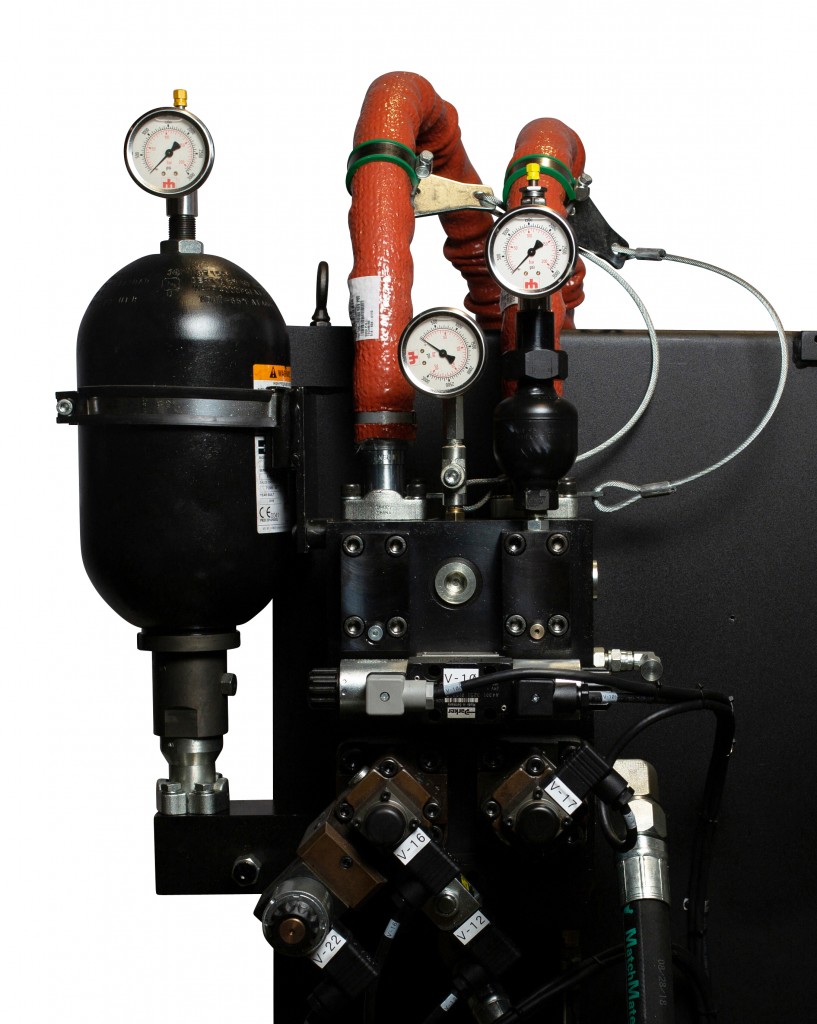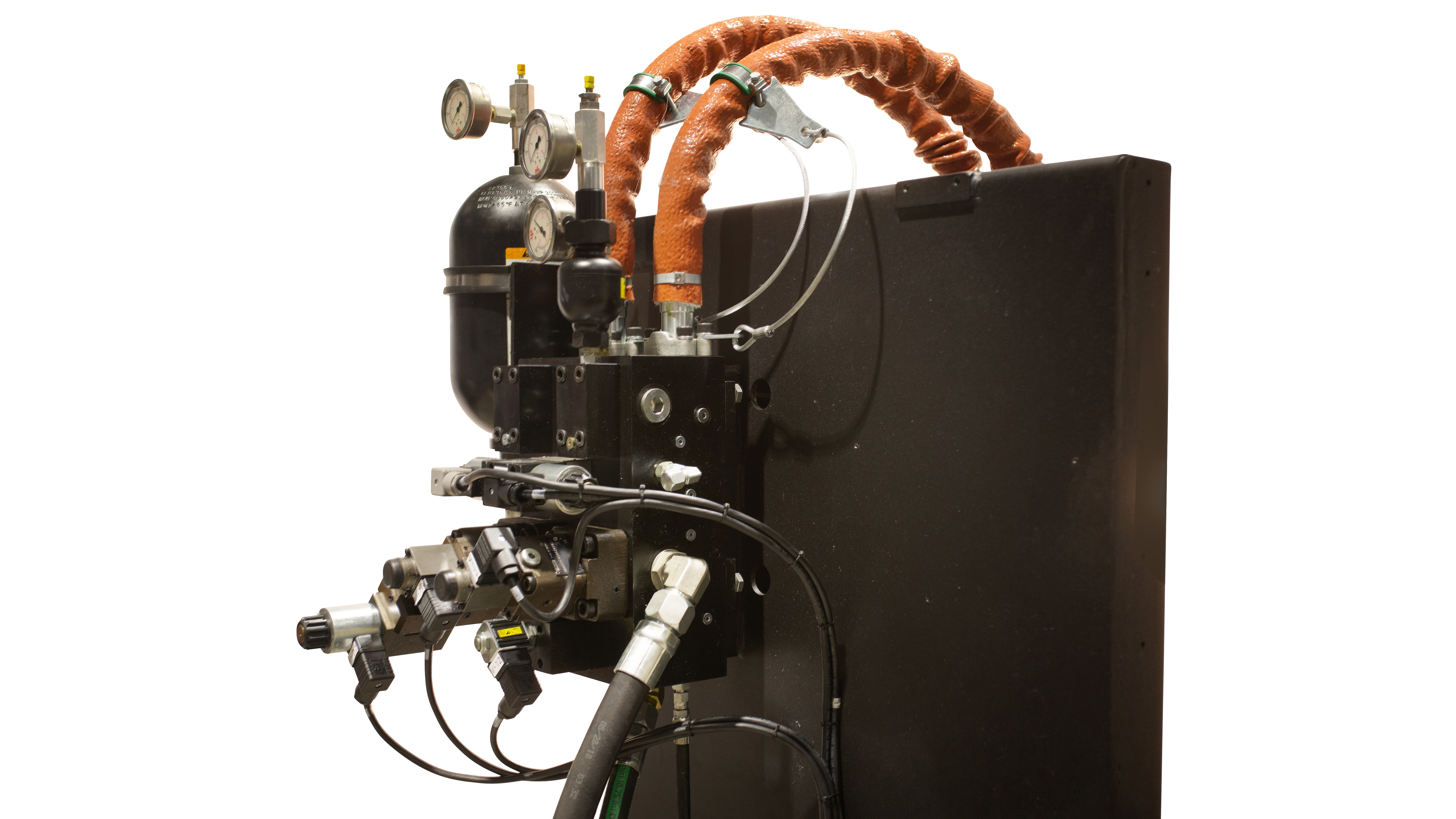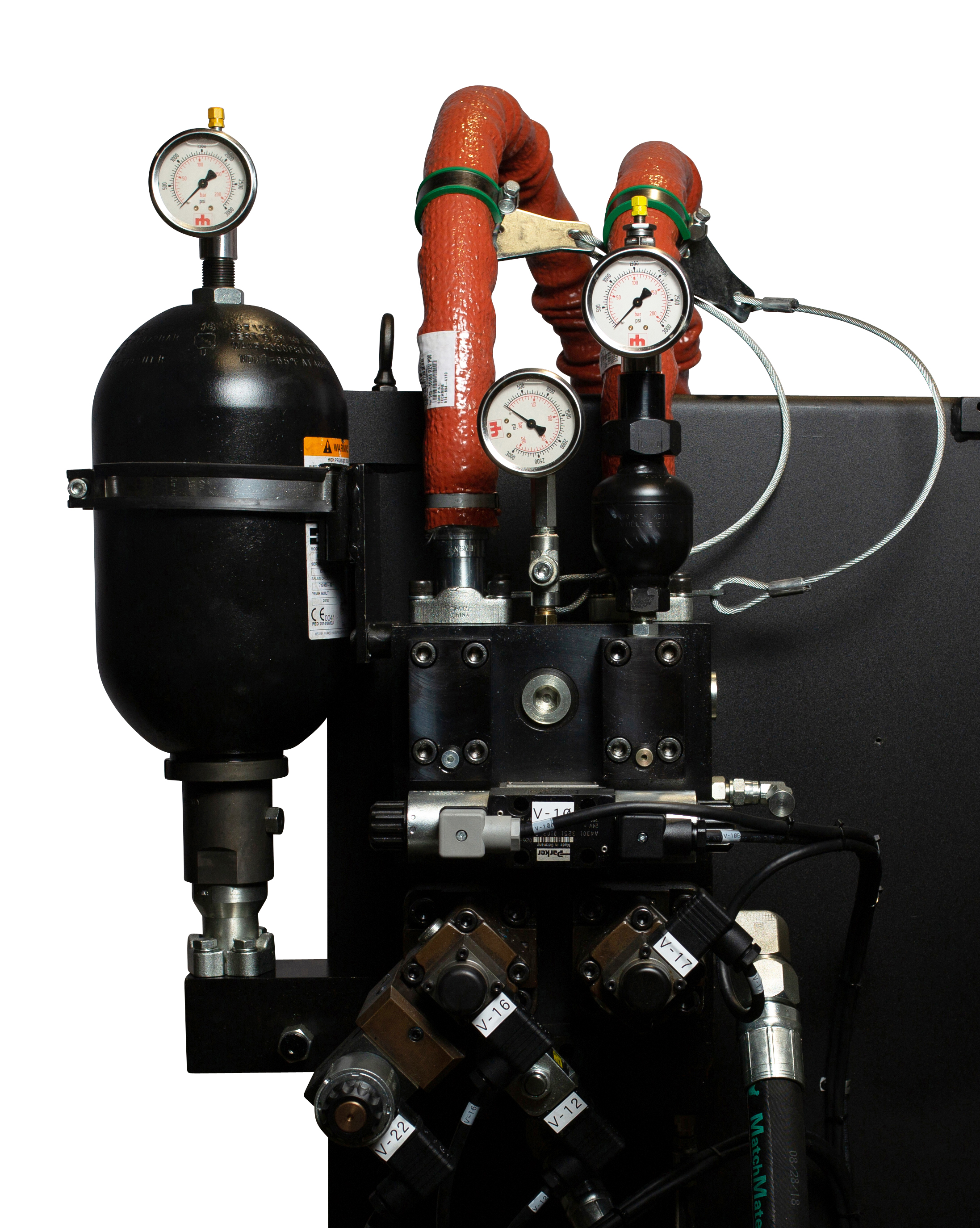Techmire > Products > Zinc & Lead > Electro-Proportional Hydraulic injection System E-PRO
Electro-Proportional Hydraulic injection System E-PRO
The EPRO injection system
Advancements in technology have permitted Techmire to develop an electro proportional hydraulic injection system. The EPRO system is specifically designed for fast injection cycles and is adapted for multiple slide Zinc or Lead hot chamber diecasting machines.
The control of the injection cylinder velocity and displacement are programmed and set up entirely through our proprietary software.
The software drives and limits the injection cylinder stroke during the fill time of the cavities. Data can be acquired from the graphics and the ‘’Process Parameter Control System’’.
In reponse to the signals from the pressure sensors and linear motion detectors, the software controls the fast-acting electro-proportional valves to reduce pressure spikes and provide a stable compression phase during injection. This results in an optimised and constant metal pressure, minimising wear and flashing of the mold.
The EPRO hydraulic system is capable of both slow and fast injection velocity adjustments. The variable adjustment, set through our proprietary software, can be at the start or end of the cavity fill time.
The programmable velocity during the injection cylinder stroke can be from 10 mm/s (0.375 in/s) up to 1800 mm/s (72 in/s).
The velocity follows a pre-programmed profile, by means of which delivery of liquid metal to the mold is controlled in the optimum manner.
When the cavities are filled, or before reaching the capacity of the entire mold, the injection cylinder can be slowed down at a specified position.
Once this position has been reached, the pressure phase of the injection begins. During this pressure phase the hydraulic pressure applied to the injection cylinder and plunger is controlled by the software, thus optimizing the metal pressure on the mold during compaction.
The Techmire EPRO hydraulic injection system allows for the full optimisation of the machine’s injection capabilities, resulting in a higher density and better internal quality of the casting, while minimising flash and mold wear, and offering a stable, repeatable process for Zinc and Lead alloys.



